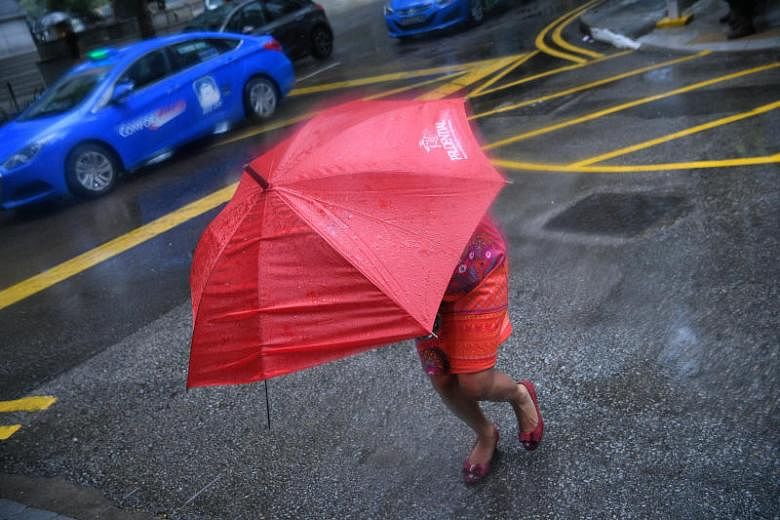SINGAPORE - More showers are expected in the next two weeks, even as warm conditions are likely to persist.
The dry phase in the past few months has ended as inter-monsoon conditions have begun since end March, said the Meteorological Service Singapore (MSS) in a statement on Monday evening (April 1).
The prevailing winds in the region are forecast to become light and variable in direction and are expected to persist through May.
During the inter-monsoon period, more showers can be expected over Singapore and the surrounding region.
April is usually the second warmest month of the year, with high lightning activity, based on historical records.
More rainy days are expected in the next two weeks as compared to the last two weeks of March, with short thundery showers expected in the afternoon over six to eight days, lasting into the evening on some days.
On two or three days in the next two weeks, the eastward passage of Sumatra squalls from Sumatra or the Strait of Malacca could bring widespread thundery showers together with gusty winds over Singapore in the morning.
Overall, the rainfall for the first fortnight of April is likely to be close to normal, said the MSS.
Hot days are expected to persist as the daily maximum temperature could soar to over 35 deg C on a few days.
Daily temperatures are expected to range between 25 and 34 deg C on most days.
"The strong daytime heating of land areas coupled with a convergence of winds over Singapore and the surrounding vicinity are conducive for the development of thunderstorm clouds in the afternoon," said the MSS.
In March, Singapore experienced drier and warmer conditions than usual.
This was partly due to the presence of a dry air mass that extended from the Pacific Ocean to parts of South-east Asia, said the MSS.
On two afternoons on March 11 and 21, intense thunderstorms resulted in daily total rainfalls of 94.6mm and 91.7mm respectively.
These were the highest daily total rainfall figures recorded last month.
The highest daily maximum temperature recorded across the island was at least 35 deg C for 19 days in March.
March 2019 was the third warmest March in Singapore, since temperature records began in 1929, with an average temperature of 28.7 deg C, said the MSS.
It is behind March 2016 (29 deg C) and March 1998 (29.5 deg C), both of which were years when strong El Nino phenomena were recorded.
March 2019, as well as the three months before it, are the warmest months in the last 90 years that were not influenced by El Nino.
A new Web video series has also just been launched for those interested to learn more about the weather conditions Singapore is experiencing.
Dubbed the Fortnightly Weather Outlook, the series is available on the National Environment Agency's YouTube channel.


